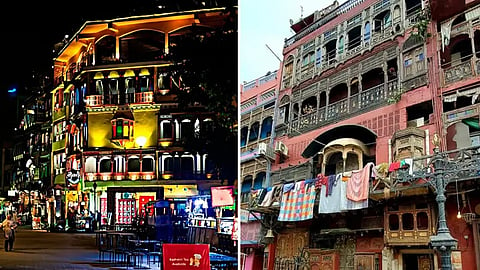

Veteran filmmaker Sanjay Leela Bhansali's OTT debut series Heeramandi: The Diamond Bazaar's first look was released on February 1, 2024. Heeramandi: The Diamond Bazaar is among the most awaited series of the year that will bring Bhansali's magical scenic film to the world of streaming. Heeramandi: The Diamond Bazaar will be released on Netflix, however, the exact release date has not been announced by the makers yet. Apart from bringing royal and larger-than-life settings to the silver screens, Sanjay Leela Bhansali is famous for bringing true stories. Now, the question arises whether Heeramandi: The Diamond Bazaar is a true story or Heeramandi: The Diamond Bazaar is a real story or not. Below is everything about Netflix's Heeramandi True Story-
Since only the teaser of Heeramandi: The Diamond Bazaar has been released, the storyline of the series has been kept under wraps. Therefore, it cannot be determined whether Heeramandi: The Diamond Bazaar is a true story or not. However, Heeramandi is a real place and Sanjay Leela Bhansali's epic web series is based in the backdrop of this place in Pakistan. Now, the question where is real-life Heera Mandi and what is its historical significance? Below is everything you need to know about real-life Hiramandi-
Real-life Heeramandi is located in Lahore, Pakistan. It is reportedly the oldest and the biggest red-light area of Pakistan. However, Heeramandi had a great historical importance. Initially, it was known as the Shahi Mohalla. Shahi Mohalla had a rich cultural history dating back to the Mughal era. Located in the Walled City of Lahore, the area served as a vibrant cultural centre in the 15th and 16th centuries, entertaining the nobility with its refined courtesans and performers. Shahi Mohalla was the epicenter of Tawaiff culture when women performers were performers and limited to presenting art forms for royals. During that phase, the tawaifs from Afghanistan and Uzbekistan were not linked to X-rated work.
At first, Heeramandi was originally developed as a residential neighbourhood for the Emperor and the attendants and servants of the royal court. Since the area was close to the Lahore Fort, people started referring to it as the 'Shahi Mohalla' (Royal Neighbourhood).
For the unversed, the tawaif culture developed in India during the Mughal era. Skilled women were reportedly 'brought' by the Mughals from mainly Afghanistan and Uzbekistan to perform Mujra and sensual royal dance forms of the mediaeval Indian court to entertain the visitors. The tawaifs were well-trained in music, etiquette, and dance by the best ustaads of the time.
In 1799, a 22-year-old Misldar named Ranjit Singh captured Lahore from the Bhangi Misl and proclaimed himself Maharaja of Punjab in 1801. He reintroduced Mughal royal customs, including the culture of tawaifs and their court performances. The tawaifs of Shahi Mohalla found patronage from the royal court.
Interestingly, in 1802, Ranjit Singh fell in love with a Muslim tawaif named Moran, leading to a separate mansion in present-day Papad Mandi, near Shahi Mohalla. It is believed that Bhansali may showcase their love story in the upcoming series Heeramandi.
Finally, in 1839, after Ranjit Singh's demise, General-turned-Prime Minister Hira Singh Dogra used Shahi Mohalla as an economic centre, constructing a food grain market in the area. Following that Shahi Mohalla became 'Hira Singh di Mandi' (Market of Hira Singh) or 'Heera Mandi'.
As the name suggest Heeramandi means diamond market in English. However, it is believed that Heera is also used as Heers referring to the courtesans of Shahi Mohalla, who looked as beautiful as the diamonds.
Currently, Heera Mandi is the busiest eating hub, with vibrant street food stalls, and vintage restaurants, during the day. However, prostitution in the region continues as night falls.